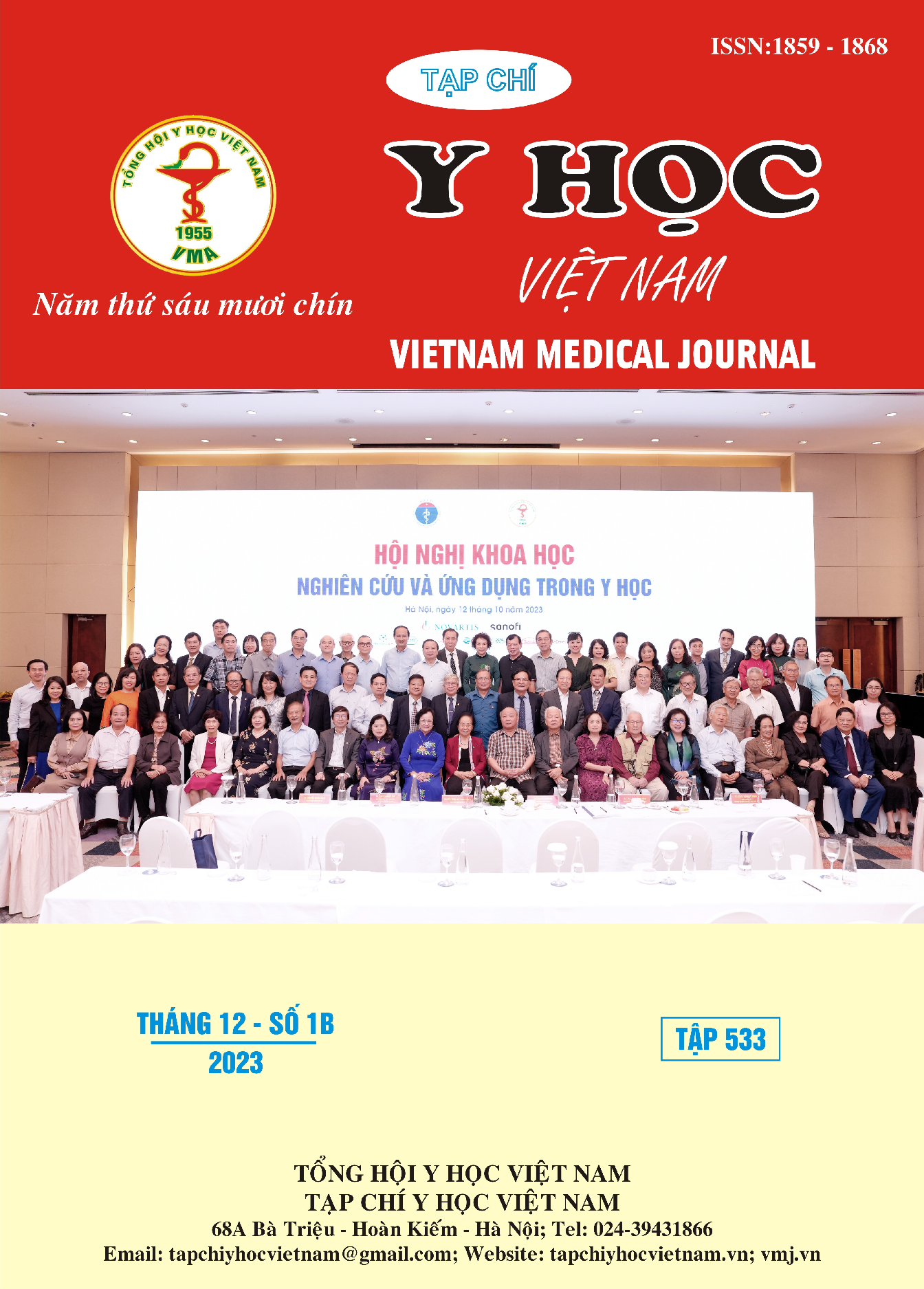HISTOPATHOLOGICAL CHARACTERISTICS OF RETINOBLASTOMA AT THE VIETNAM NATIONAL EYE HOSPITAL IN 2022
Main Article Content
Abstract
Objective: To describe the histopathological characteristics of retinoblastoma at the Vietnam National Eye Hospital in 2022. Research subjects and methods: Cross-sectional, retrospective descriptive study on 38 medical records and histopathological slides of patients with retinoblastoma treated at the Vietnam National Eye Hospital from January to the end of December 2022. Results: The study was conducted on 38 eyes of 38 patients, including 19 men and 19 women. The average age was 3.11 ± 2.56 years. There were 26 patients with monocular disease (68.4%) and 12 patients with binocular disease (31.6%). The rates of tumors infiltrating the anterior segment, choroid, sclera and optic nerve were 10.5%, 21%, 5.3% and 63.2%, respectively. There were 22 eyes (57.9%) without the presence of high-risk histopathological factors and 16 eyes (42.1%) with high-risk histopathological factors. The high-risk histopathological factors recorded were: anterior segment invasion (10.5%), massive choroidal invasion (18.4%), scleral invasion (5.3%), %), post-laminar optic nerve invasion (26.3%). Chemotherapy had no relationship with tumor invasion (p>0.05), however, it reduced the incidence of high-risk histopathological factors compared to untreated eyes (p=0.025). Conclusion: Retinoblastoma often invaded the the optic nerve but rarely penetrated the anterior segment, choroid and sclera. Chemotherapy reduced the incidence of high-risk histopathological factors compared with untreated eyes.
Article Details
Keywords
retinoblastoma, histopathology, high-risk histopathological factors
References
2. Xu X.L., Fang Y., Lee T.C. và cộng sự. (2009). Retinoblastoma Has Properties of a Cone Precursor Tumor and Depends Upon Cone-Specific MDM2 Signaling. Cell, 137(6), 1018–1031.
3. Kivela T. (2009). The Epidemiological Challenge of the Most Frequent Eye Cancer: Retinoblastoma, an Issue of Birth and Death. British Journal of Ophthalmology, 93(9), 1129–1131.
4. Phạm Trọng Văn, Phạm Thị Minh Châu, và Nguyễn Ngân Hà (2016). Một số nghiên cứu gần đây về u nguyên bào võng mạc tại bệnh viện Mắt Trung ương: dịch tễ học lâm sàng, giải phẫu bệnh và các yếu tố nguy cơ (2003 - 2013). Tạp chí ung thư học Việt Nam, 1, 365–375.
5. Fabian I.D., Khetan V., Stacey A.W. và cộng sự. (2022). Sex, gender, and retinoblastoma: analysis of 4351 patients from 153 countries. Eye (Lond), 36(8), 1571–1577.
6. Ngô Văn Lăng và Hoàng Anh Tuấn (2019). Nghiên cứu đặc điểm mô bệnh học và một số dấu ấn hóa mô miễn dịch trong u nguyên bào võng mạc. Luận văn Thạc sĩ y học.
7. Alkatan H.M., Al-Dahmash S.A., Almesfer S.A. và cộng sự. (2020). High-risk features in primary versus secondary enucleated globes with advanced retinoblastoma: a retrospective histopathological study. Int Ophthalmol, 40(11), 2875–2887.


